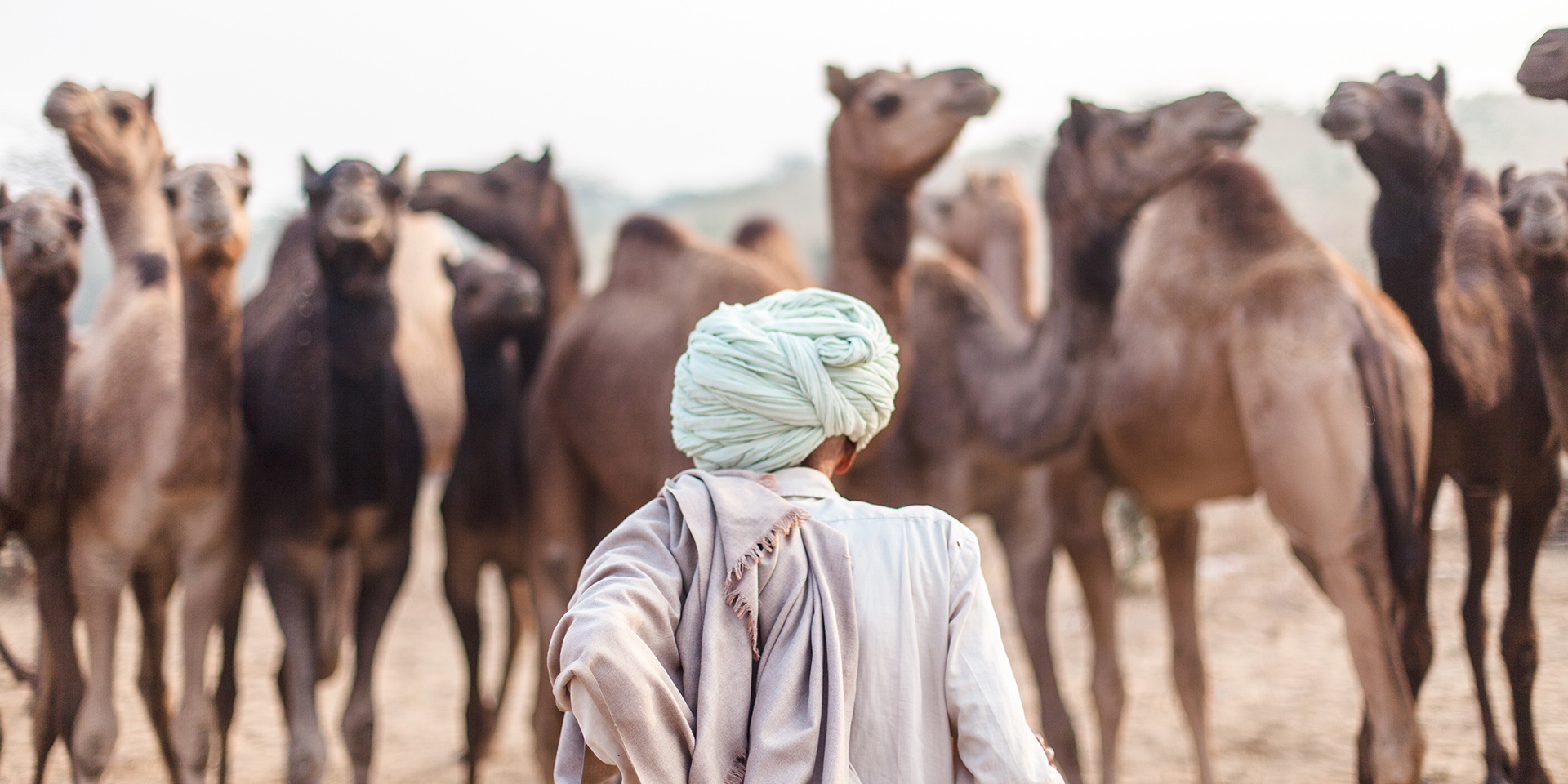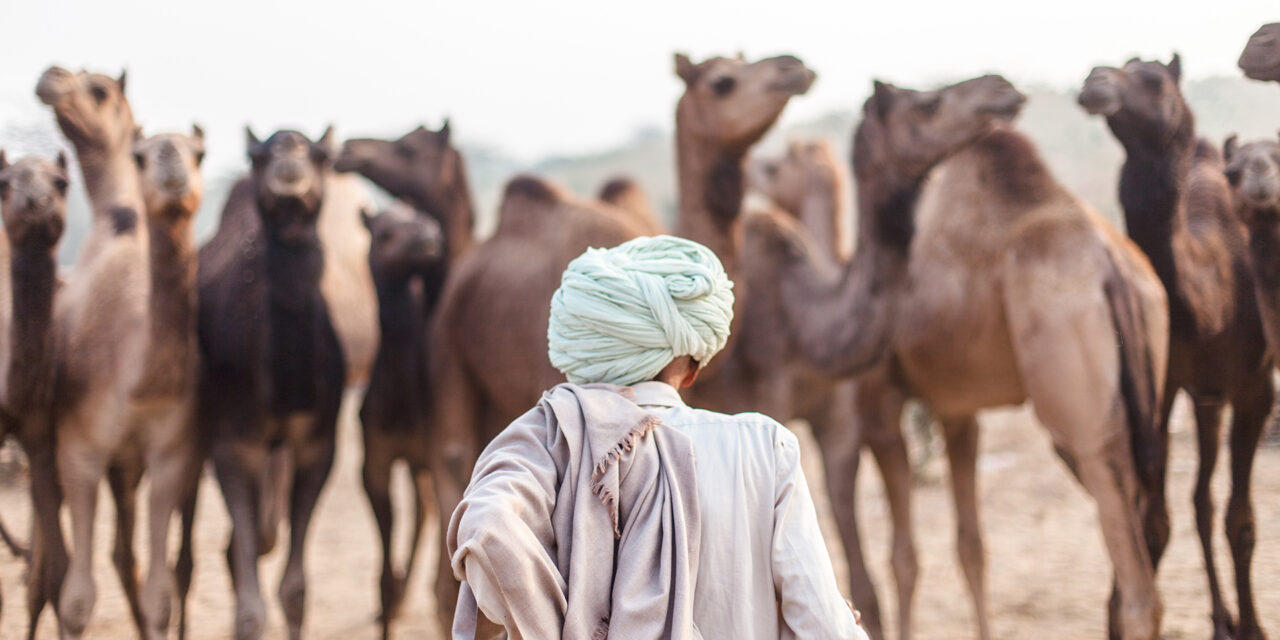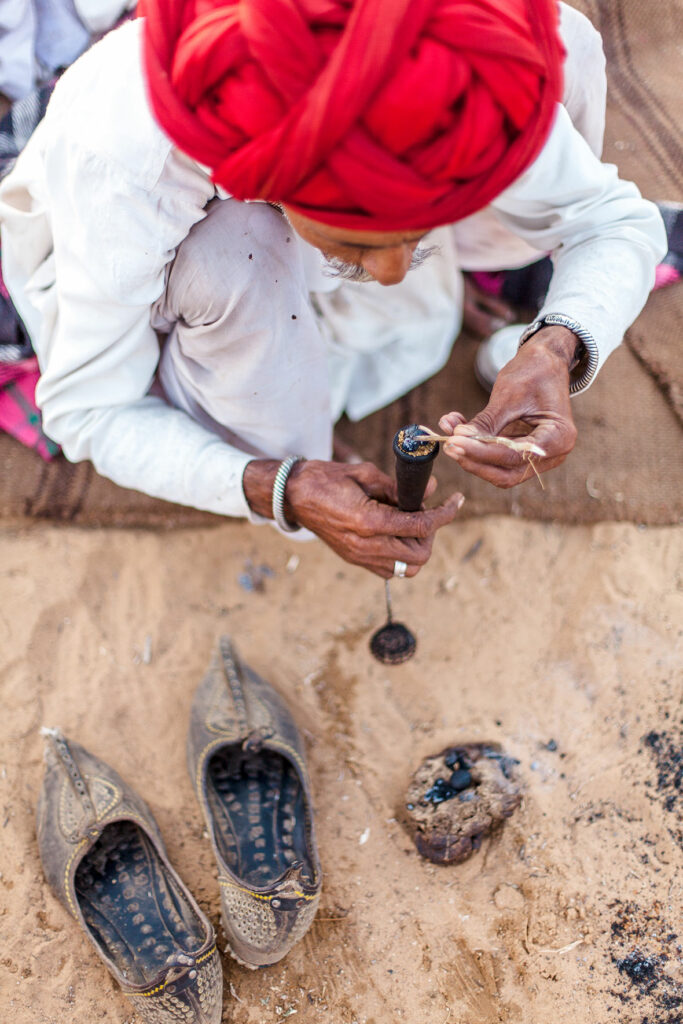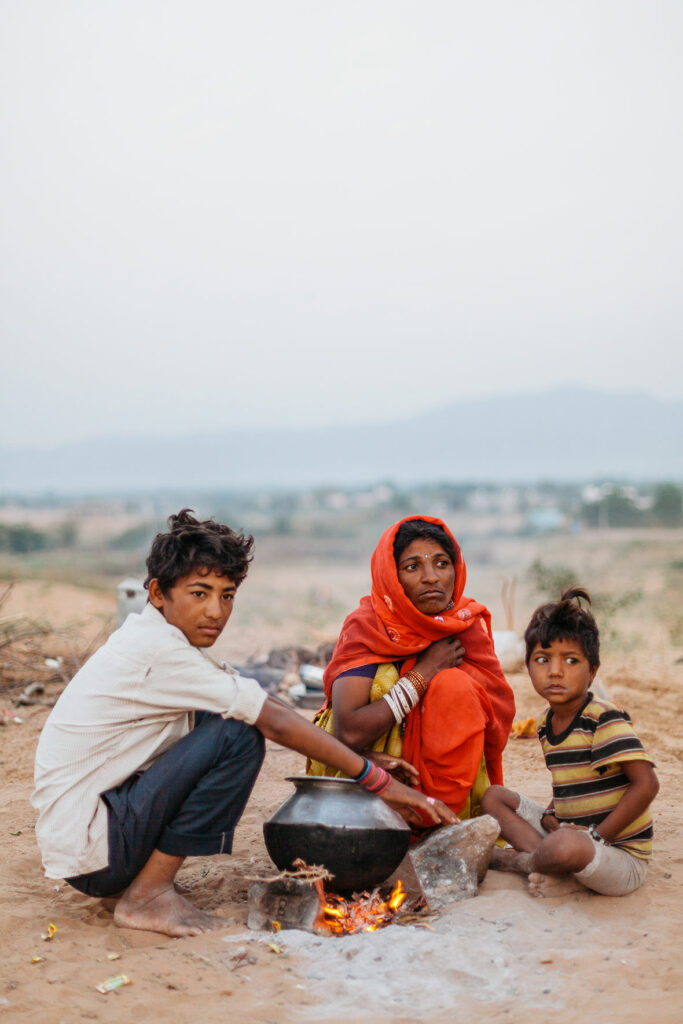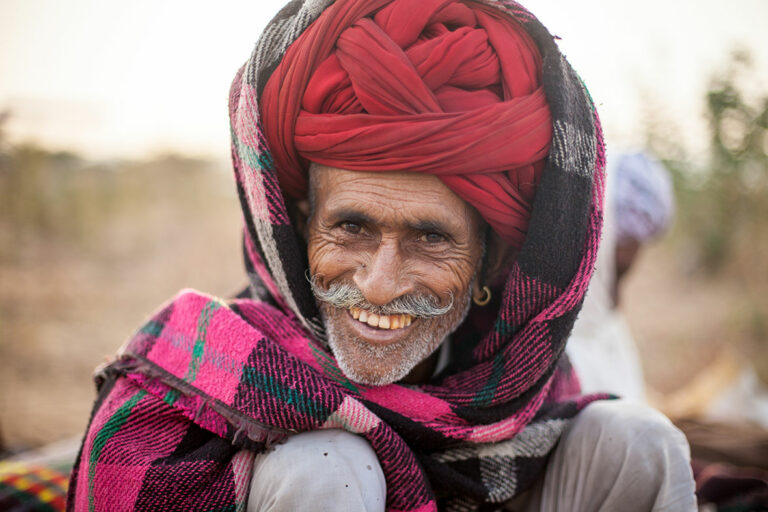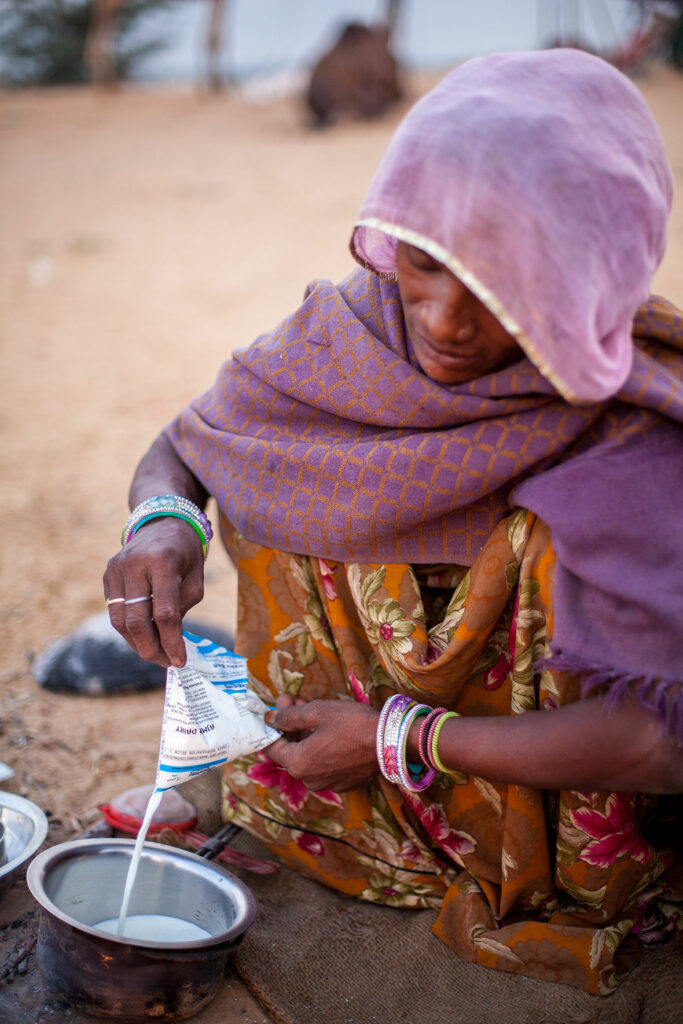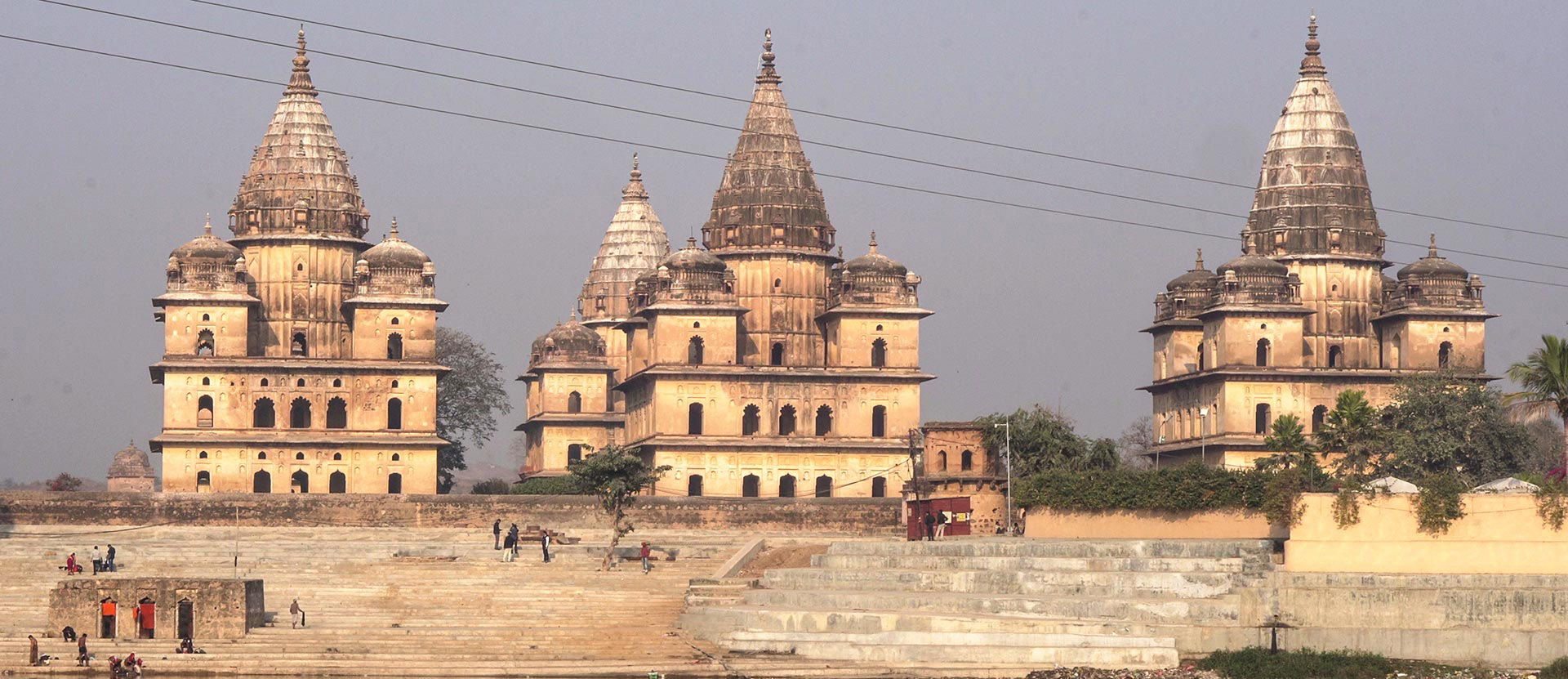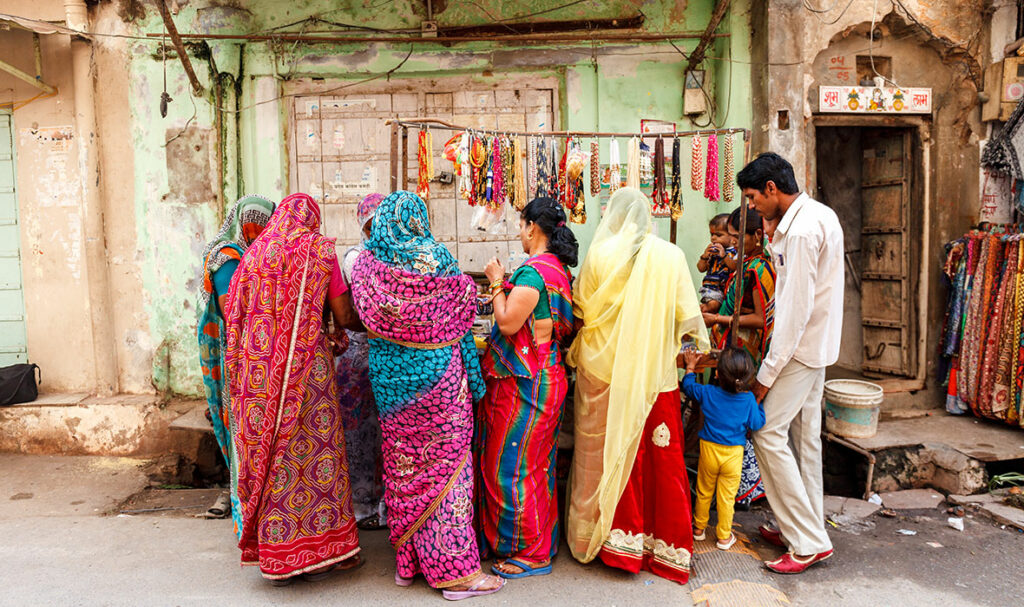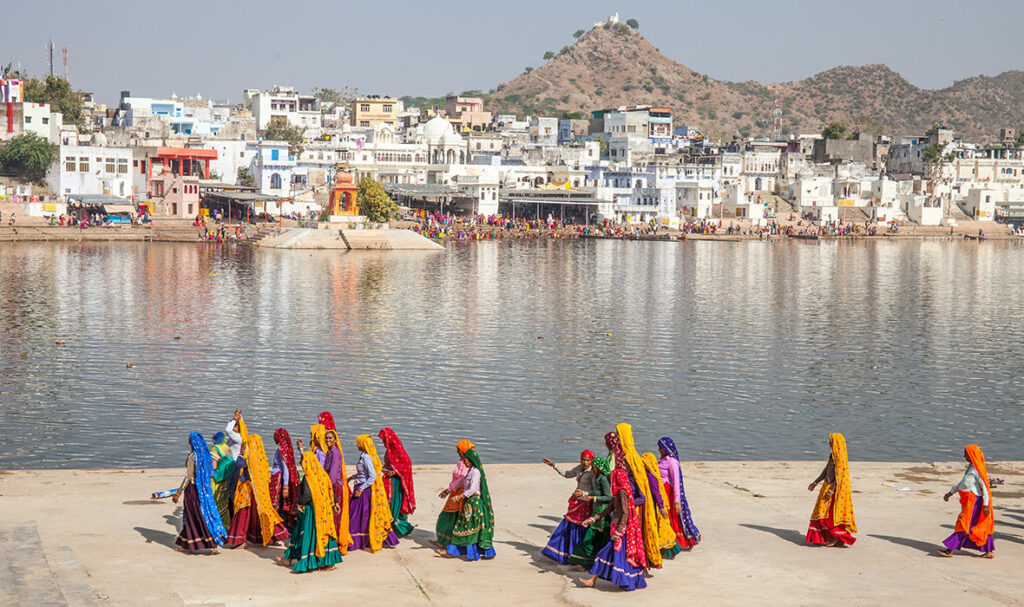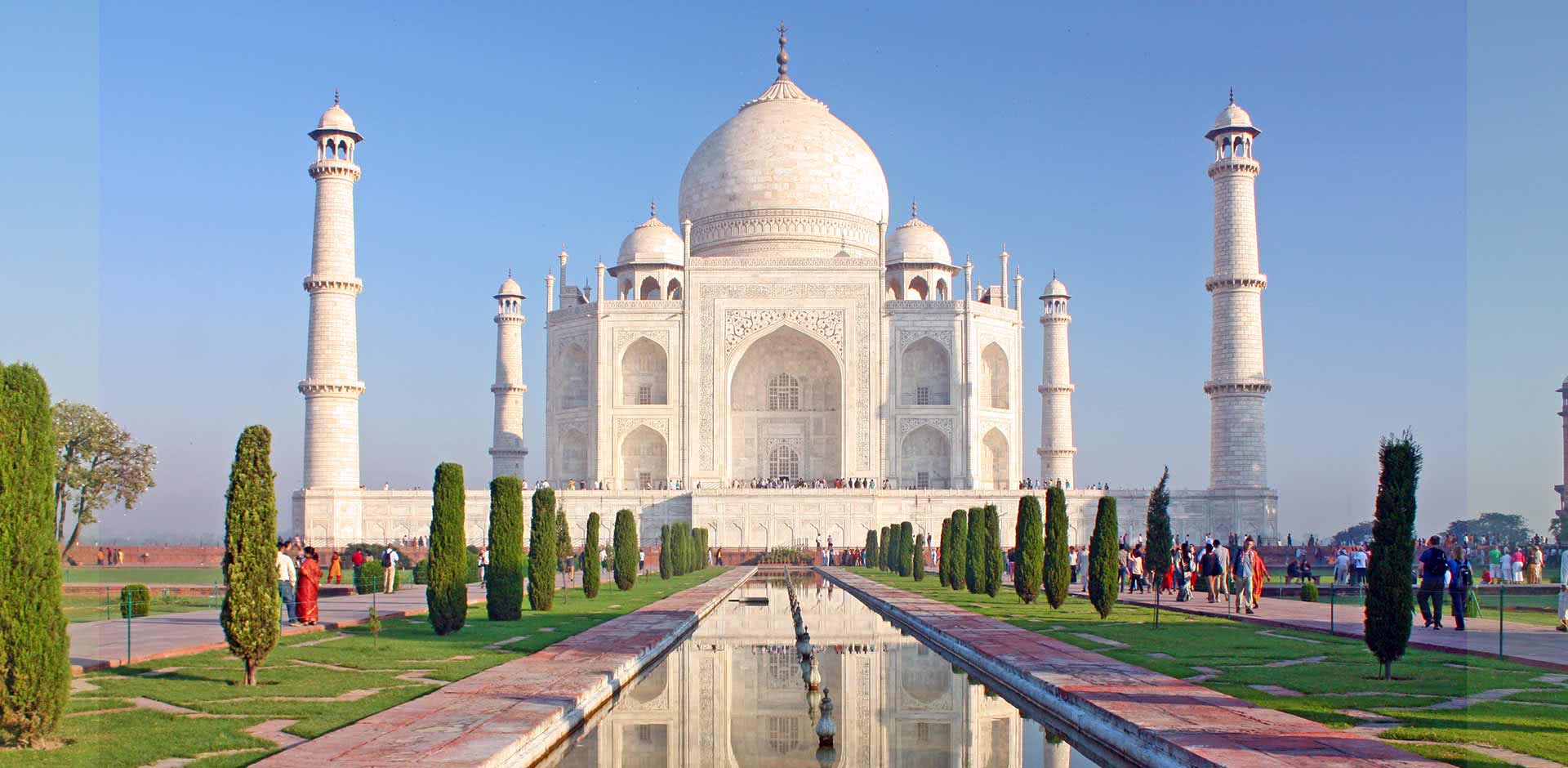Every year in mid-November, the dunes around the tiny Rajasthani town of Pushkar transform. From barren desert plains, a mirage of camels appear from the desert. Traders from across the state arrive with their one-humped beasts, set up camp on the dunes, and get ready for one of the region’s most unique cultural sights: the Pushkar Camel Fair.
The scene of smoking turbaned traders, golden glowing sunsets, and the faces of Rajasthani gypsy women make for a photographer’s paradise. Yet this scene of apparent chaos can be a difficult one to shoot, particularity if you are short of time at the fair – and it’s a lot easier if you know where to go.
Life begins early in the Thar Desert, and during my time in Pushkar, I found that the best time to photograph authentic local life was early in the morning.
Before the sun rises, chai begins brewing from small stoves outside the tented camps. The women heat warm milk and masala spices, while the men tend to the camels, offering them the first feed of the day.
At this time, there are few tourists around and interacting with the herders and their families feels much more authentic. Accept the offering of a chai and enjoy the light rising over the landscape with a local family.
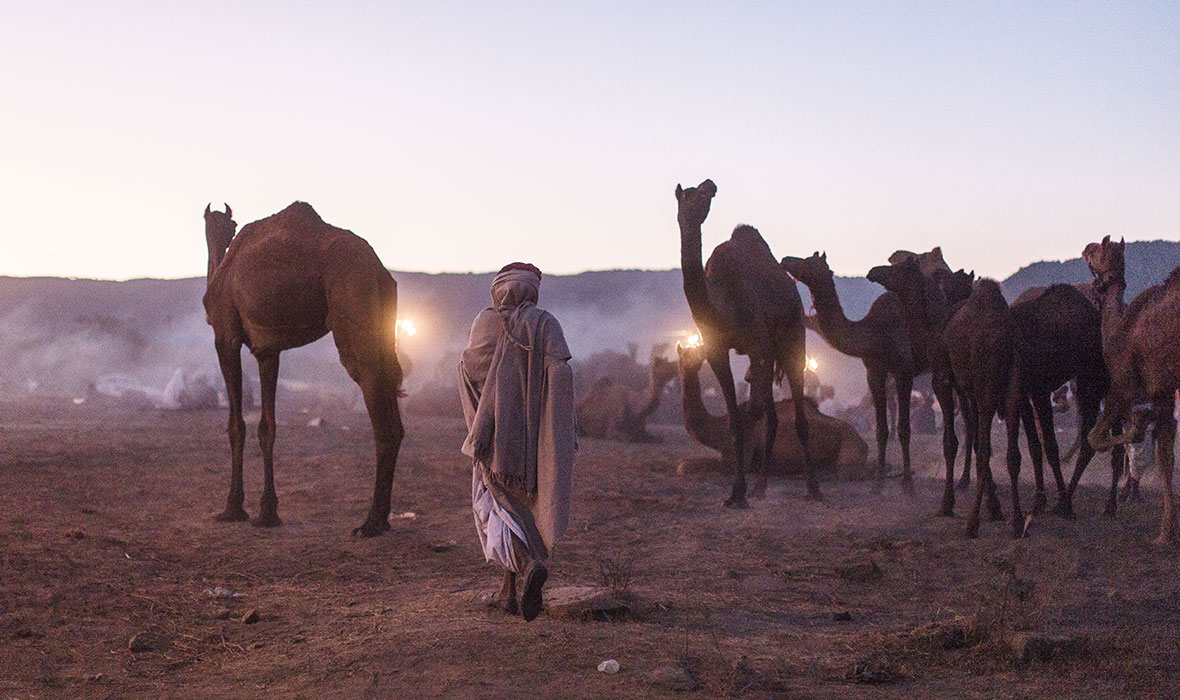
ABOVE: Camel herder at dawn.
When you photograph people in India, and anywhere around the world, it is important to ask for permission. The results make for a much more engaging portrait. You will find that many of the camel herders and their families are happy to be photographed, although some will ask for small change or tobacco in exchange.
Capture the cultural celebrations
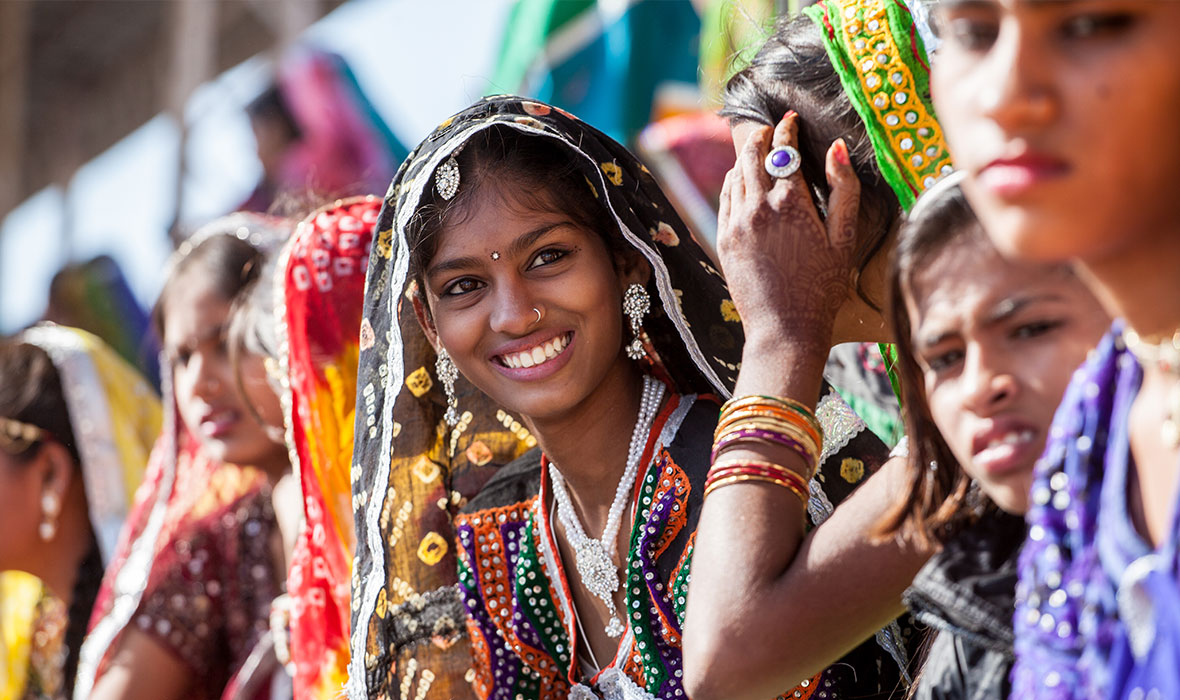
ABOVE: Women at the cultural festival.
As well as the main camel trading, a cultural program takes place for several days at a location a few minutes away from the main fair. The program consists of Rajasthani dancing, camel decorating competitions, live music, as well as the main attraction – the great mustache competition. The events take place in a stadium on the edges of the town, and while it’s not the prettiest backdrop, it is still possible to get great pictures in here. A telephoto lens can help you capture details of the performers without being too intrusive into the events.
ABOVE: (Left) Market stall in Pushkar town. (Right) Women walk by Pushkar Lake.
Although the main happenings of the fair take place on the dunes outside of Pushkar, the festivities spill over into the narrow streets of the town, and you can get great photographs here as well. Like many of Rajasthan’s town, Pushkar is an incredibly photogenic place. Buildings are painted an off-white and you’ll find colorful street art on every corner. Turn down backstreet and you’ll come across hidden temples, beautiful spots of light and moments of everyday life.
Pushkar centers around the Pushkar Lake, a pool of water surrounded by steep white stepped ghats and during the fair, the herders and their families take the time to come to the lake and bathe in the holy waters, which were said to be created when lotus petals fell from the hands of Lord Brahma. While photographing the bathers is strictly prohibited, it’s possible to get sweeping wide shots of the lake and town, and it’s particularly glorious at sunset.
Get some Scale by Climbing High
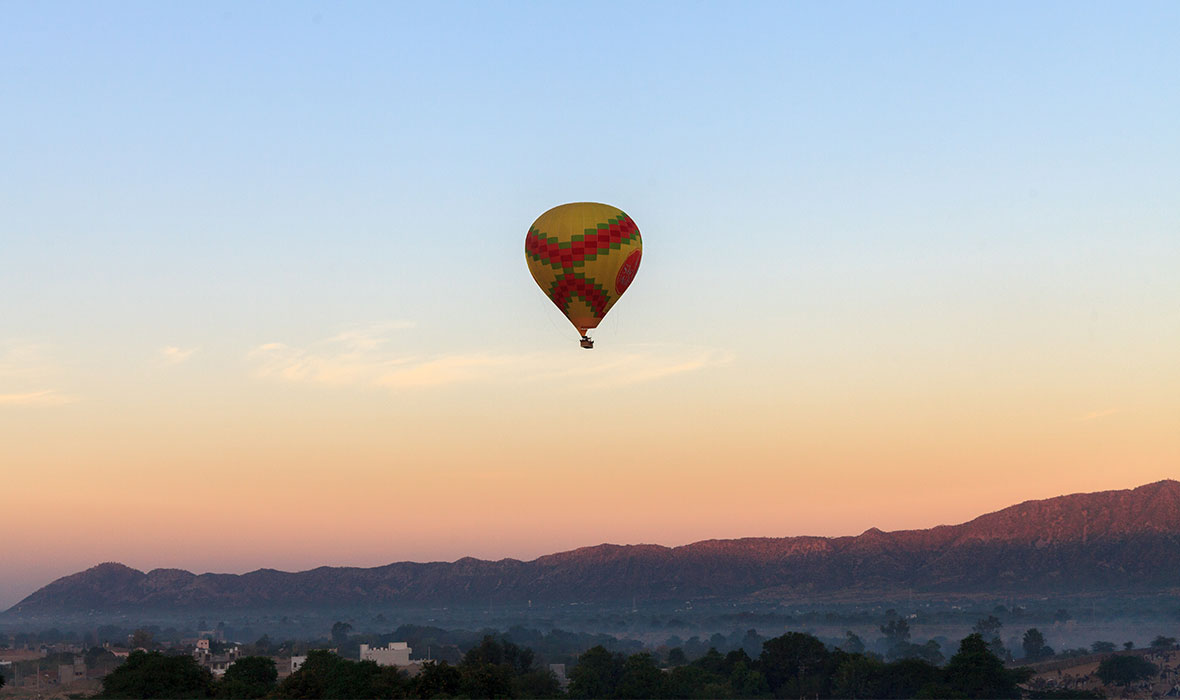
ABOVE: Hot air balloon over Pushkar.
There are a number of viewpoints in Pushkar which can give you scale over the town and camel fair. Perhaps the most spectacular is Nag Pahar, otherwise known as Snake Mountain. It’s a long climb up a series of steps to reach the top, where you’ll find temples, some very cheeky monkeys, and an incredible view over the town and desert around. During the fair, local companies offer hot air balloon rides over the area, and if you can catch one of these at sunset it really gives the idea of scale in this vast landscape. Another spot to head to is the Pap Mochani Temple, which is better in the morning.
Capture that sunset light
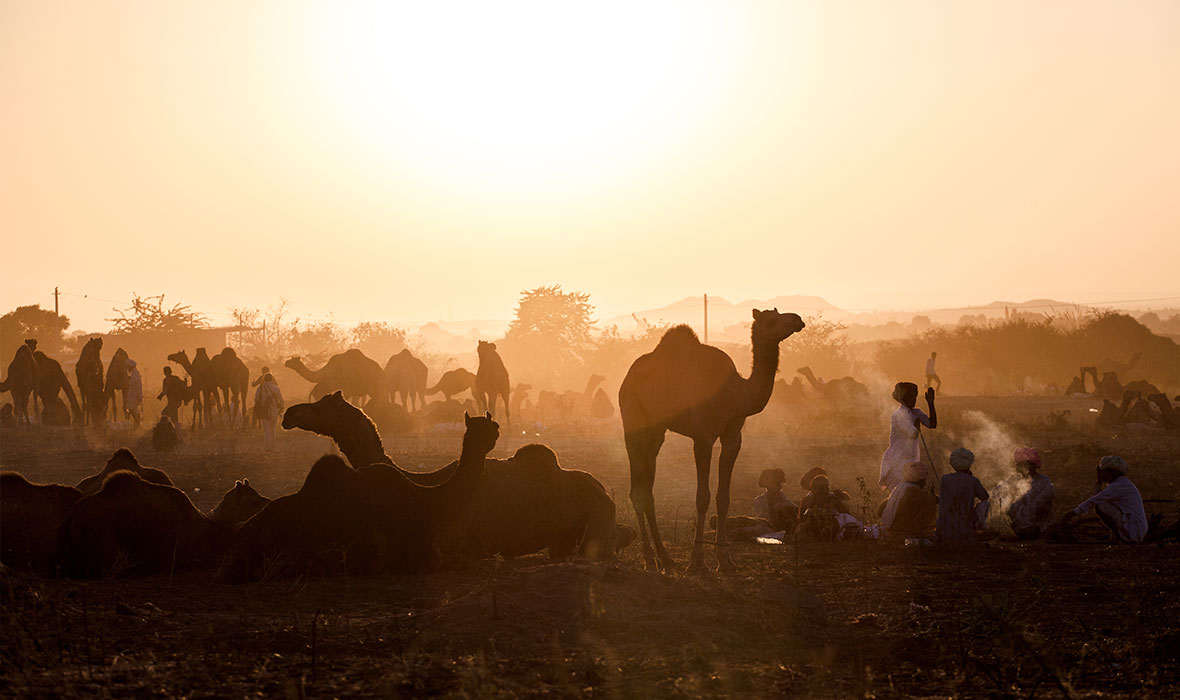
ABOVE: Camels at sunset at the Pushkar camel fair.
While the sunrise in Pushkar is the best time to capture portraits and cultural interactions of the local people, it’s at sunset when the light shines through the dunes and creates the most breathtaking shapes, patterns, and shadows. Head back down to the main fair at this time, and feast your shutter on the silhouettes of camel humps, the smoking of campfires in the golden light, and find a vantage point for panoramic layers.
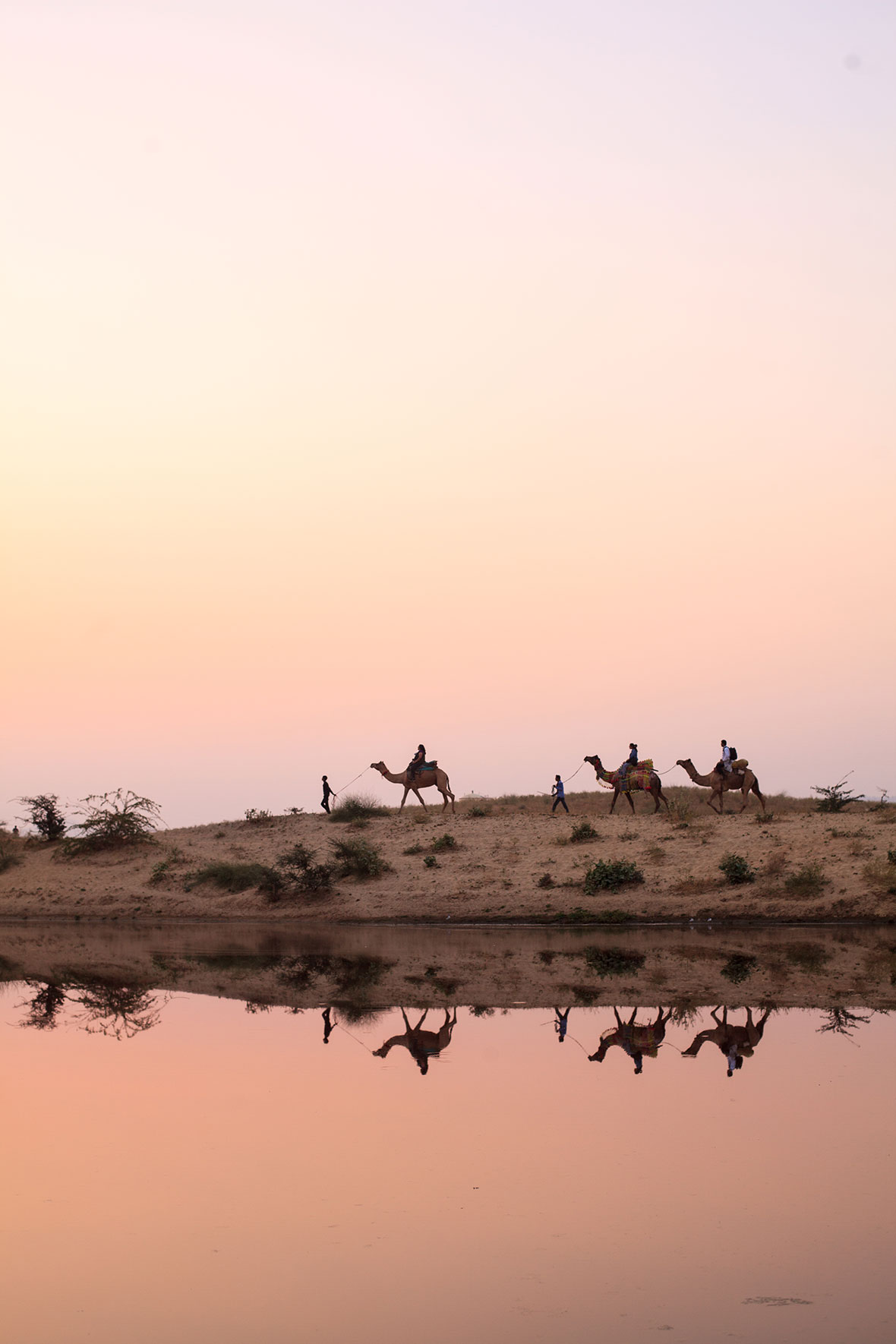
ABOVE: Reflections of the camels on the water at sunset in Pushkar.
The fair is not just camels, and as the air begins to cool, the horse fair also comes to life. At sunset, you’ll find potential buyers racing horses across empty stretches of the desert, testing the speed of the animal. As the dusk swells into the air, it makes some fantastic photographs – just don’t forget to raise your shutter speed to capture the rapid movement.
If you have the time, stick around
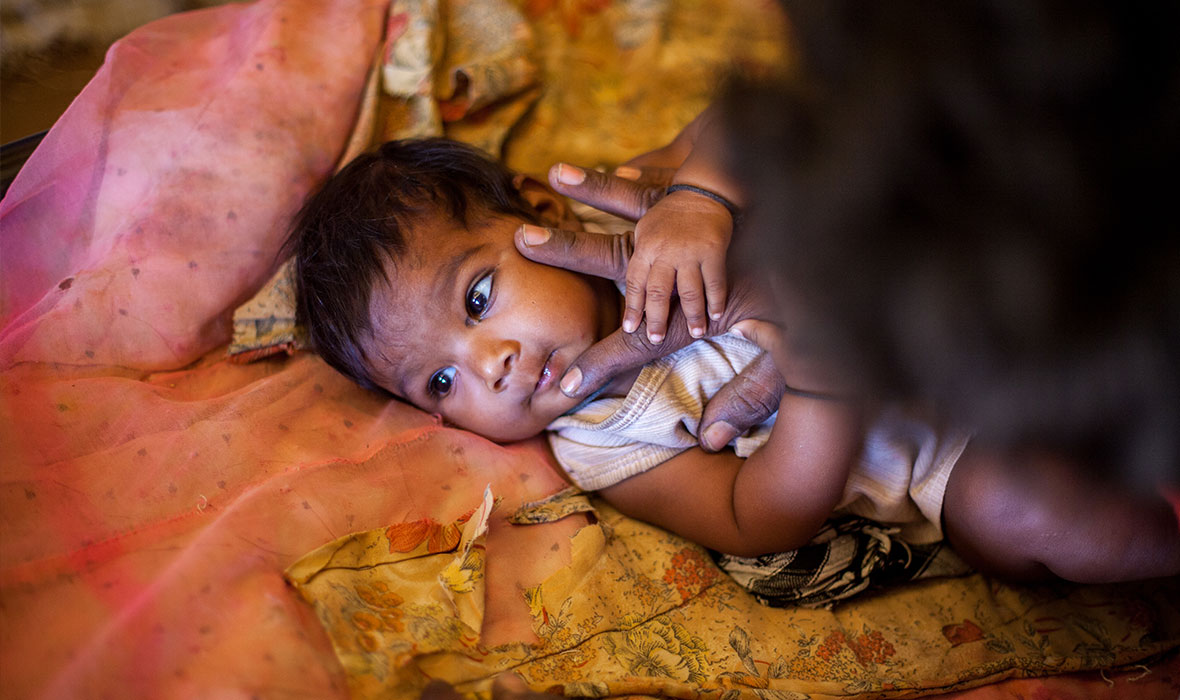
ABOVE: Baby at a local camp.
My biggest tip for photographers wanting to engage with the culture and people of a place is always to stay as long as you can to get to know the people you are capturing. This builds a relationship of trust, and makes for much more meaningful photographs.
While you will find many photographers at the fair, most only come for a day or two over the main cultural program. Arrive a week or so before, and you’ll find you are one of the only photographers around, which gives you a unique advantage of being able to engage with the herders and their families and get a unique and engaging set of photographs.
The Pushkar Camel Fair takes place in November each year. In 2018, it will run from November 15 to 23.

